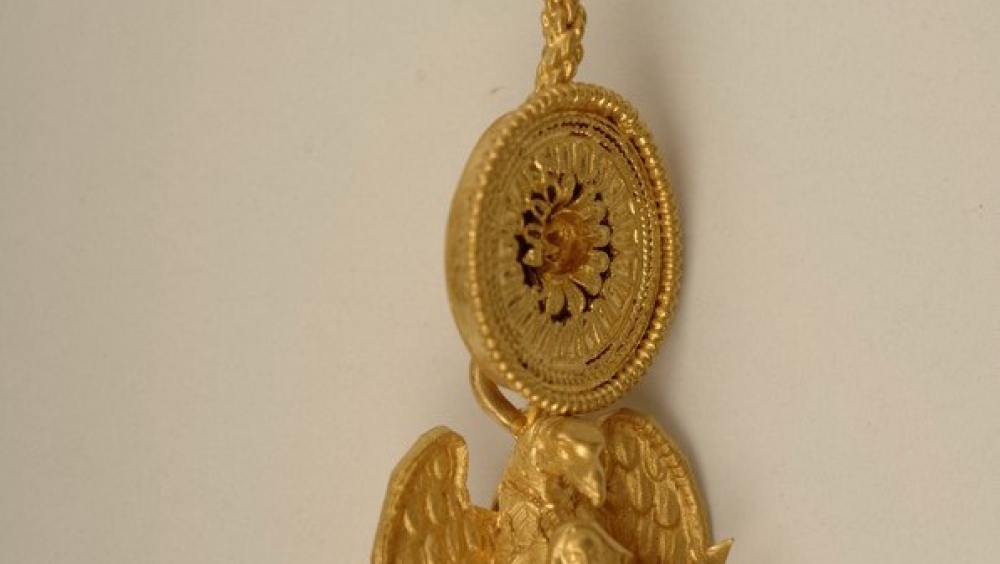Golden Earrings from the Museum of Budva
The City Museum of Budva was founded in 2003 and it contains archaeological treasures discovered in antique necropolises near the Old Town during the excavations in 1938, 1956-57 and, after the earthquake, in 1981-82. The collection of Hellenistic golden jewelry is especially valuable, and within that collection, the golden earrings and the brooch with an eagle holding a boy in claws especially stand out. This depiction is related to the ancient myth of Zeus and Ganymede. Having this in mind, the tangible heritage of Budva is linked to and forms a part of the European antique heritage from the Hellenistic period.
Budva, as one of the oldest cities on the Adriatic, was founded more than 2,500 years ago. Along with its hinterland, it is rich in cultural heritage, especially archaeological, architectural as well as intangible cultural heritage. Antique necropolises, Hellenistic and Roman, have been storing luxurious items of gold, silver, bronze, glass, fine ceramics and other materials for millennia, and some of these items have been preserved and are still exhibited in the Museum of Budva. The Museum contains archaeological collections (antique and medieval), as well as new-age (ethnological), and it exhibits about 3,000 museum objects. The archaeological collection of the City Museum of Budva includes a Hellenistic and Roman collection. The great wealth of our Museum is considered to be a collection of Hellenistic golden jewelry. From that collection, the golden earrings and the brooch with an eagle holding a boy in claws especially stand out. This depiction is related to the ancient myth of Zeus and Ganymede. In Greek mythology, Ganymede is the embodiment of beauty. Homer calls him "the most beautiful mortal". In the myth of Zeus and Ganymede, Zeus falls in love with a young Ganymede, who keeps sheep on Mount Ida, and wants to make him his lover. Zeus turns into an eagle, takes Ganymede to Mount Olympus, where Ganymede becomes the cup-bearer of the Gods. Zeus' wife, Hera, was angry and jealous when she heard that Ganymede became the cup-bearer of the Gods and Zeus's lover. When Ganymede realized that the mortals were thirsty, he refused his role as a cup-bearer, spilling the wine and the water of the Gods. Although Zeus was furious, he ultimately decided not to punish him, but placed his figure among the stars in the constellation of Aquarius, making him immortal and fulfilling his desire to provide water to people by sending them rain. This myth is often depicted in the works of art that represent Ganymede and Zeus in the form of an eagle on canvases, ceramics, other media of art, and in the case of our story, on the earrings.
The earrings from the City Museum of Budva represent tangible proof that links Budva with the wider European area through ancient Greek mythology, which is said to be among the most important in human history.
